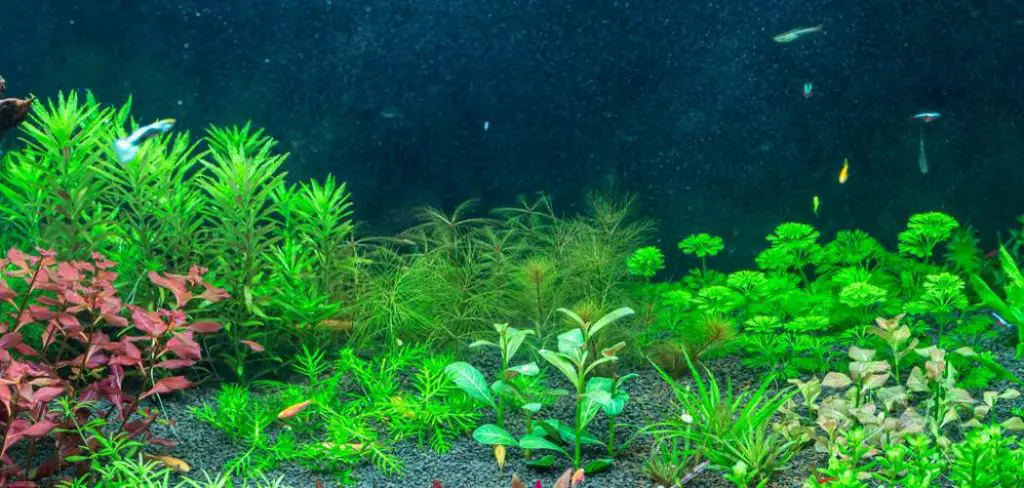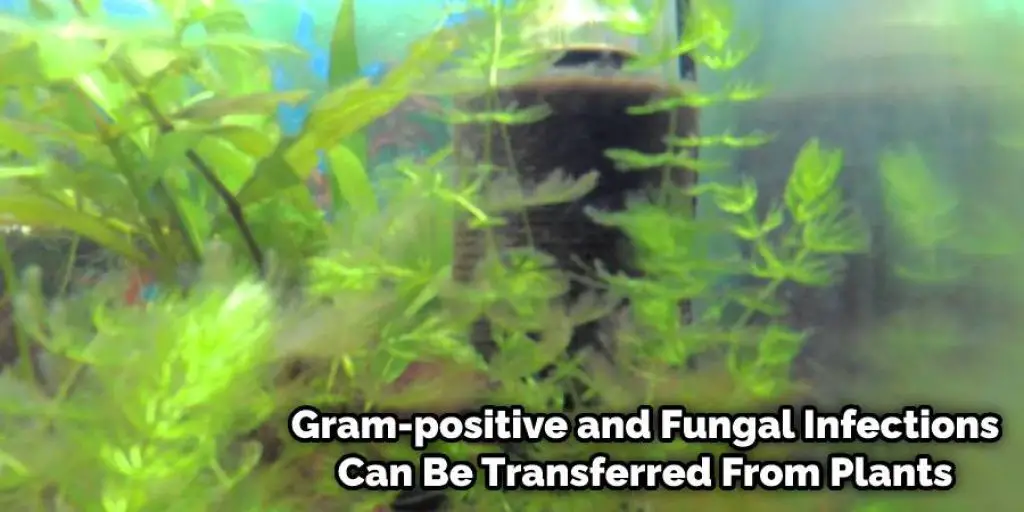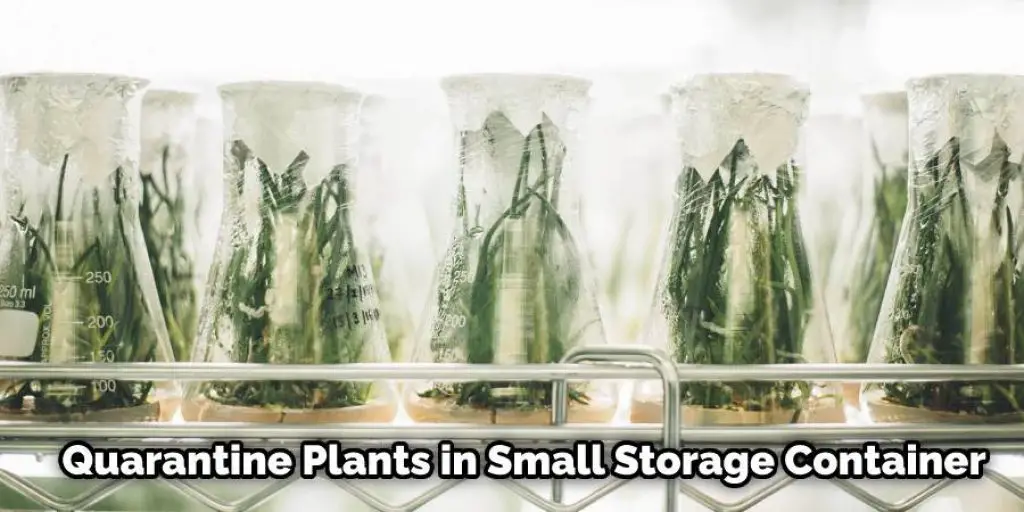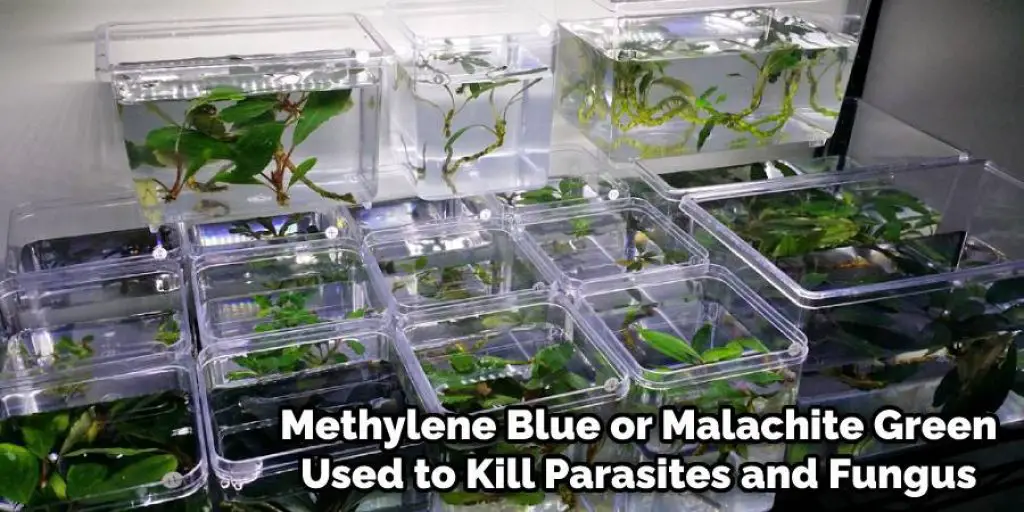It is essential to quarantine all new plants before introducing them into an established tank in the aquarium hobby. This article will help ensure how to quarantine aquarium plants. To do this, you need a fish-free cycle using one of several methods outlined below. The required equipment is minimal and can be reused for many quarantines in the future. Once a plant has been successfully quarantined, it can be introduced into your main display tank without fear of contaminating it with pest or disease spores that may have come from another source, such as another plant or water conditioner used on another system before being used on yours.

Quarantine tanks are also helpful if you plan to move an established aquarium containing live plants to a new location. By quarantining all plants before transferring them, you can prevent the spread of any pest or disease spores that may be attached to the substrate and rock work in your display tank during your move.
Why Should Quarantine Aquarium Plants
Gram-positive and fungal infections may be transferred from one plant to another via a dirty razor blade. This is especially true for those who propagate their own plants by cutting them up into many small pieces. This increases the chance of spreading disease-causing organisms through a single medium/substrate exponentially. In addition, some pathogens can survive for a short period of time on the exterior surfaces of aquarium plants, and even if they do not survive your tank’s biological filter long enough to kill off your population of fish or shrimp, these pathogens may be passed along to other systems via water changes or live food cultures.

This means that a plant you buy from a local retailer which appears healthy may be infected with a disease you are trying to prevent. Quarantine Aquarium plants help ensure that problem-free live plant purchases can be made by using a small amount of time and resources to ensure the health of your livestock.
Materials You Needs
- Quarantine Tank
- 3-gallon clear storage tote with lid
- Aquarium heater(s)
- Thermometer(s)
- 3-inch layer of gravel for drainage in the bottom of the tank.
- Aquarium filter capable of maintaining a safe oxygen level for fish.
- An air pump with airline tubing and airstone(s) to provide aeration, along with a spare set of airline tubing and an airstone that you will not use until ready to place new plants into your main tank.
- A spray or two of pure alcohol (isopropyl) to sterilize items before placing them inside your quarantine tank.
- A small turkey baster for siphoning water out of the quarantine tank.
Ways on How to Quarantine Aquarium Plants
One: Isolation Tank (aka Hospital Tank) Method
The Isolation tank (hospital) method is by far the simplest way to start your quarantine. A hospital tank, isolation tank, or isolation aquarium is essentially nothing more than a small storage container that you can use as a temporary home for quarantined fishes, invertebrates, or plants that may be affected by a disease or parasite. Normally, hospitals are used to house one fish/invertebrate but can be converted into quarantine tanks capable of housing many fishes if necessary.

Two: Medicated Dip Method
The medicated dip method is a short-term version of the hospital tank method used for both fish and plants. In this method, a quarantine tank is set up as usual, and treated water from a healthy aquarium is added. A small amount of pure (100%) medicinal-grade methylene blue or malachite green is added to the water. The plants or fishes are exposed for a short time, then rinsed with treated water from the main tank before being used placed into their hospital quarantine.
This method can be very effective in killing external parasites on a wide range of aquarium livestock within a matter of minutes. Still, prolonged exposure may result in the death of the quarantined animals.
Three: Medicated Food Method
The medicated food method, while not as effective against external parasites and disease pathogens on some species of aquarium livestock, is an inexpensive way to kill many internal parasites and pathogens in a quarantine tank full of live plants or fish. One advantage this method has over the use of dips is that most fish and invertebrates can be treated for a short period of time (a couple of hours) before the medication in their food will kill them. The best medicine to use in this method is metronidazole (aka “Flagyl”), which is commonly used to treat internal parasites and Hexamita infections in cichlids.
Four: Medicated Water Method
The medicated water method is a short-term quarantine method for both fish and plants, which involves using a small amount of pure (100%) medicinal-grade methylene blue or malachite green added to a small volume of treated water from a healthy aquarium. Medicinal-grade methylene blue or malachite green can be used to kill external parasites and fungus, but the main reason to use this method is for its ability to treat internal parasitic infections when added directly to a quarantine tank full of live plants or fish.

This method takes a little more time than the medicated food method because it must contact the animals for a couple of hours before the medication starts working. In addition, internal parasites are killed when they consume any part of an animal that contains medicated water or food, which means that the death of quarantined fish/invertebrates may take a few days in this method.
Frequently Asked Questions
How Long Do You Need to Quarantine Aquarium Plants?
It is important to quarantine your aquarium plants before introducing them into the main tank. This will help prevent fish from getting sick or any other parasites from spreading.
The time required for this depends on the type of plant and how it is planted in the aquarium. In general, if you are using a large enough tank with at least 30 gallons of water, you should be able to quarantine your plants for 3-4 weeks without problems.
Do I Need to Quarantine Aquarium Snails?
The best way to prevent the spread of disease is by quarantining your aquarium snails.
You should be able to identify what type of snail you have because they all behave differently, and some are more likely to carry disease than others.
Should I Quarantine Cherry Shrimp?
Cherry shrimp is a tropical freshwater shrimp that can be found in tanks or on the bottom of ponds. They are often seen in many types of ornamental aquariums.
Quarantine is when an organism or animal is isolated and kept away from other members of its species to prevent disease spread.
There Are Different Types of Quarantines :
- Isolation: when a person, plant, animal, or object is isolated from others to prevent the spread of disease by restricting contact with them;
- Quarantine: a state into which an individual enters after being exposed to potential pathogens; and
- Phytosanitary quarantine is when plants and animals enter a country for exhibition, trade, or transport that may carry pests and diseases.
Conclusion
If you’re wondering how to quarantine aquarium plants, read these tips. It’s important to quarantine new plants before adding them to the tank because they may contain pests or diseases that can be transferred to other plants. It would help to make sure any plant-based fertilizers are organic and appropriate for aquatic environments like fish tanks. Lastly, make sure you use quality potting soil with well-draining properties, so it doesn’t cause root rot problems; this will keep your plants healthy and thriving! Thank you for reading our article. If you have any questions or concerns, please leave a comment below.
You can also read – How to clean aquarium gravel without removing water








